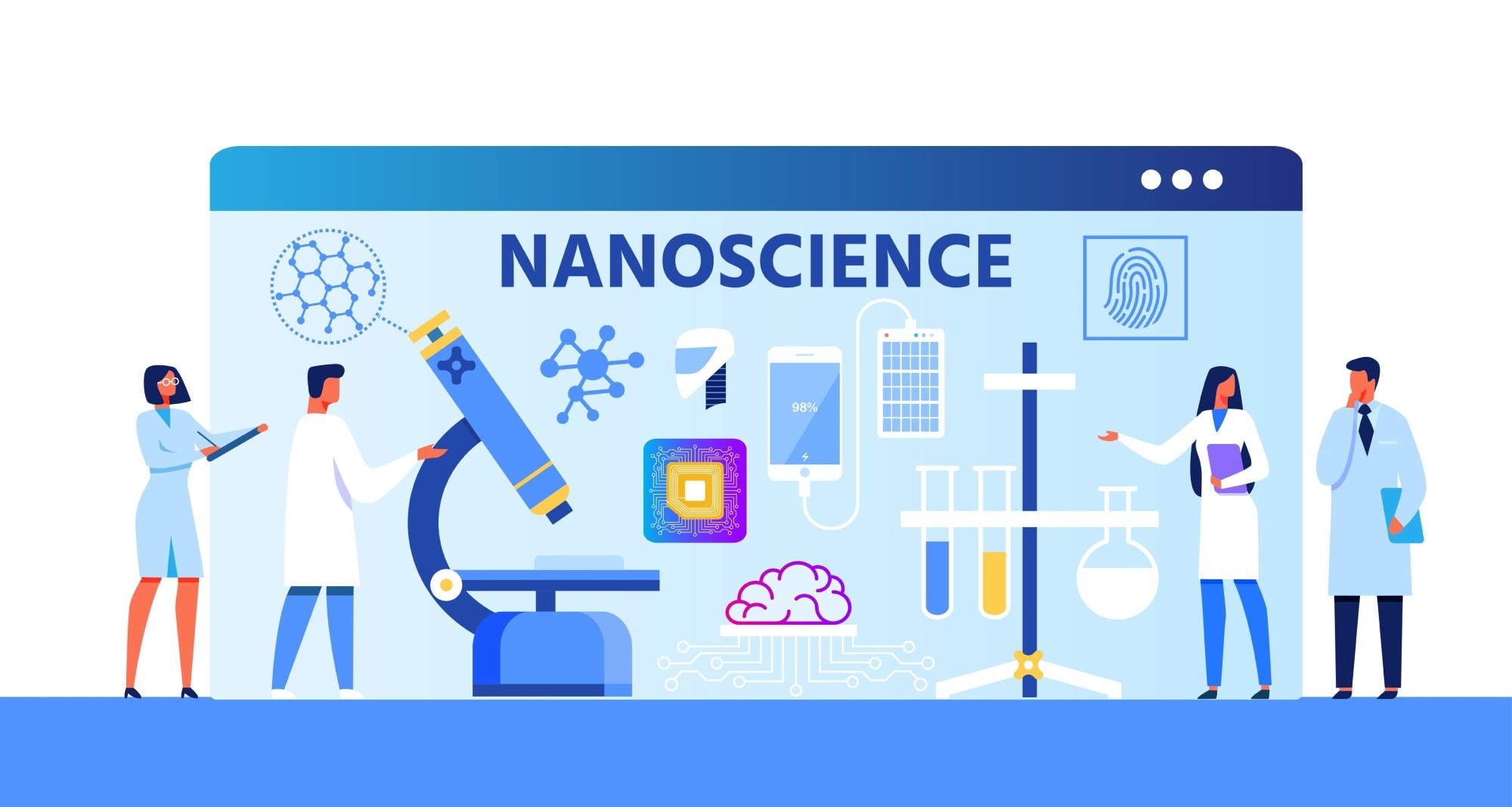Nanotechnology is expanding the ease of medical equipment access, information, and theranostics. Nanomedicine is the use of nanotechnology in medicine to provide efficient solutions for disease diagnosis, therapy, and prevention. In this article, AZoNano focuses on how nanomedicine is impacting society.
Nanotechnology in Society
Societies worldwide that lack access to fundamental services like clean water, healthcare, and stable energy benefit from novel solutions offered by nanotechnology. Nanoscience helps to address the urgent need for accessibility to essential services by creating products such as enhanced water purification and filtration systems.
Water filters as small as 15-20 nanometers in width may eliminate nano-sized particles such as viruses and bacteria. The cost-effectiveness and portability of these water treatment devices makes them suitable for boosting the quality of drinkable water in developing nations.
For instance, nano-filters made of graphene can be delivered to remote locations at which only contaminated water is obtainable and filtration is most needed.
Nanomedicine, including tools and equipment for medical diagnosis and treatment, food production, and information technologies, are a few other applications where nanotechnology is used to improve the standard of living offered to society’s citizens.
What Are the Benefits and Barriers of Nanomedicine?
The societal impact of nanomedicine refers to both the benefits and barriers (issues) that introducing revolutionary nano-based products including medical sensors, drug delivery systems, and nanomaterials might pose to humanity and society.
Nanomedicine can increase the effectiveness (bioavailability) and safety of traditional therapeutics. It is extremely beneficial as a non-invasive instrument for diagnostic imaging, tumor identification, and drug delivery due to the distinct magnetic, optical, and structural features of nanomaterials that other instruments lack.
Nanovaccines are nanorods or nanoparticles distributed in a fluid with antigens for a specific illness. Antigens cause an immunological reaction when a nanovaccine is administered to the body, which can strengthen immunity. They have the potential to become a crucial method for distributing vaccinations to remote areas since nanomedicine can be utilized as a preventive measure for several diseases.
Still, significant benefits have their share of risks and barriers. The lack of batch-to-batch repeatability, long-term stability of inventions, the complexity of the production procedures, long-term toxicity assessments, societal acceptance, and maintaining sterile settings are among the barriers associated with the translation of nanomedicines.
The legislative guidance needed for nanomedicine innovations to proceed with clinical trials lags behind the ongoing scientific developments in this respect.
The global translation of nanomedicine has also been hindered by the lack of proper controls, poorly defined key quality criteria, and therapeutically appropriate animal models that accurately represent human biological mechanisms.
Safety and environmental concerns, coupled with transitional consequences like the displacement of conventional businesses as nanotechnology-based products take hold and become the mainstream, are other barriers that privacy rights activists have found concerning. These could be particularly relevant if the potential nanotoxicity impacts of nanoparticles are disregarded.
The progressive adoption of uniformly standardized procedures might encourage improved and factual reporting of materials and processes and impact the paradigm for many already available nanomedicine products.
Boosting Trust in Nanomedicine
The inventive aspect of nanomedicine may captivate society’s interest; however, there are several concerns regarding the societal and environmental impacts of its progress. Studies have proven that using nanomedicine has many benefits but transforming society will depend on public perception.
Therefore, several organizations and social scientists in society recommend that public engagement should be included in the technical evaluation for the commercialization of nano-based products in addition to governance.
Scientists are working to address major medical issues like the COVID-19 pandemic, which demand rapid attention from the perspective of society to provide trustworthy nanomedicines for the public.
John Hopkins University researchers have created a sensor that can quickly and accurately identify COVID-19 and other viruses by employing large-area nanoimprint lithography, machine learning and surface-enhanced Raman spectroscopy (SERS).
Cytimmune, a biotechnology company, has developed Aurmine (CYT-6091), a new nanomedicine-based therapy for treating solid tumor malignancies. It is composed of gold nanoparticles, polyethylene glycol (PEG-THIOL) molecules, and tumor necrosis factor-alpha (TNF-α), a tumor-killing agent attached to it.
TNF molecules attach the gold nanoparticle to cancerous cells once it enters the vicinity of a cancer tumor. The therapeutic product is now being prepared for phase 2 clinical trials to be conducted at National Cancer Institute (NCI).
Organizations such as the Food and Drug Administration (FDA), the United States Environmental Protection Agency, and the Health & Consumer Protection Directorate of the European Commission have already begun addressing the potential negative impacts posed by nanoparticles to manage risks associated with nanomedicines. As a result, the public’s trust in nanomedicine advancements can be encouraged.
The National Nanotechnology Initiative is working to advance the commercialization of nanotechnology research and development, promote public awareness, and ensure the ethical advancement of nanomedicine for the benefit of society.
The National Institute for Occupational Safety and Health (NIOSH) has also conducted preliminary studies on how individuals may be exposed to nanoparticles during the fabrication or industrial usage of nanomaterials and how nanoparticles interact with the body’s internal systems.
NIOSH currently provides provisional guidelines for handling nanomaterials that are in accordance with the state of scientific understanding. Based on the information, various researchers, regulatory agencies, and healthcare organizations are uniting to boost the public’s trust in nanomedicine and have a beneficial social impact.

Image Credit: Unitone Vector/Shutterstock.com
Future Outlook: The Impact of Nanomedicine on Society
Numerous products and innovations in the field of nanomedicine are now on the market. However, others still need to overcome barriers, including technological constraints, cost-effectiveness issues, and possible hazards that might have an adverse impact on society.
To address these issues, proponents of nanomedicine can make significant contributions to studies targeted at creating effective belief systems and control frameworks that encourage ethical research practices and prevent misconduct.
Contributions may involve establishing what constitutes improper practices, assigning researchers, institutions, and funding organizations clearly defined responsibilities concerning the negative impacts of nanomedicines, and designing a fair, precise, knowledge-based system for sanctions and accusation investigations.
This would promote the development of effective policies for the impartial evaluation of innovations in nanomedicine both nationally and internationally and lead to an advanced societal future.
Continue reading: The Benefits of Nanomedicine
Image Credit: Envato Elements
News
AI matches doctors in mapping lung tumors for radiation therapy
In radiation therapy, precision can save lives. Oncologists must carefully map the size and location of a tumor before delivering high-dose radiation to destroy cancer cells while sparing healthy tissue. But this process, called [...]
Scientists Finally “See” Key Protein That Controls Inflammation
Researchers used advanced microscopy to uncover important protein structures. For the first time, two important protein structures in the human body are being visualized, thanks in part to cutting-edge technology at the University of [...]
AI tool detects 9 types of dementia from a single brain scan
Mayo Clinic researchers have developed a new artificial intelligence (AI) tool that helps clinicians identify brain activity patterns linked to nine types of dementia, including Alzheimer's disease, using a single, widely available scan—a transformative [...]
Is plastic packaging putting more than just food on your plate?
New research reveals that common food packaging and utensils can shed microscopic plastics into our food, prompting urgent calls for stricter testing and updated regulations to protect public health. Beyond microplastics: The analysis intentionally [...]
Aging Spreads Through the Bloodstream
Summary: New research reveals that aging isn’t just a local cellular process—it can spread throughout the body via the bloodstream. A redox-sensitive protein called ReHMGB1, secreted by senescent cells, was found to trigger aging features [...]
AI and nanomedicine find rare biomarkers for prostrate cancer and atherosclerosis
Imagine a stadium packed with 75,000 fans, all wearing green and white jerseys—except one person in a solid green shirt. Finding that person would be tough. That's how hard it is for scientists to [...]
Are Pesticides Breeding the Next Pandemic? Experts Warn of Fungal Superbugs
Fungicides used in agriculture have been linked to an increase in resistance to antifungal drugs in both humans and animals. Fungal infections are on the rise, and two UC Davis infectious disease experts, Dr. George Thompson [...]
Scientists Crack the 500-Million-Year-Old Code That Controls Your Immune System
A collaborative team from Penn Medicine and Penn Engineering has uncovered the mathematical principles behind a 500-million-year-old protein network that determines whether foreign materials are recognized as friend or foe. How does your body [...]
Team discovers how tiny parts of cells stay organized, new insights for blocking cancer growth
A team of international researchers led by scientists at City of Hope provides the most thorough account yet of an elusive target for cancer treatment. Published in Science Advances, the study suggests a complex signaling [...]
Nanomaterials in Ophthalmology: A Review
Eye diseases are becoming more common. In 2020, over 250 million people had mild vision problems, and 295 million experienced moderate to severe ocular conditions. In response, researchers are turning to nanotechnology and nanomaterials—tools that are transforming [...]
Natural Plant Extract Removes up to 90% of Microplastics From Water
Researchers found that natural polymers derived from okra and fenugreek are highly effective at removing microplastics from water. The same sticky substances that make okra slimy and give fenugreek its gel-like texture could help [...]
Instant coffee may damage your eyes, genetic study finds
A new genetic study shows that just one extra cup of instant coffee a day could significantly increase your risk of developing dry AMD, shedding fresh light on how our daily beverage choices may [...]
Nanoneedle patch offers painless alternative to traditional cancer biopsies
A patch containing tens of millions of microscopic nanoneedles could soon replace traditional biopsies, scientists have found. The patch offers a painless and less invasive alternative for millions of patients worldwide who undergo biopsies [...]
Small antibodies provide broad protection against SARS coronaviruses
Scientists have discovered a unique class of small antibodies that are strongly protective against a wide range of SARS coronaviruses, including SARS-CoV-1 and numerous early and recent SARS-CoV-2 variants. The unique antibodies target an [...]
Controlling This One Molecule Could Halt Alzheimer’s in Its Tracks
New research identifies the immune molecule STING as a driver of brain damage in Alzheimer’s. A new approach to Alzheimer’s disease has led to an exciting discovery that could help stop the devastating cognitive decline [...]
Cyborg tadpoles are helping us learn how brain development starts
How does our brain, which is capable of generating complex thoughts, actions and even self-reflection, grow out of essentially nothing? An experiment in tadpoles, in which an electronic implant was incorporated into a precursor [...]






















